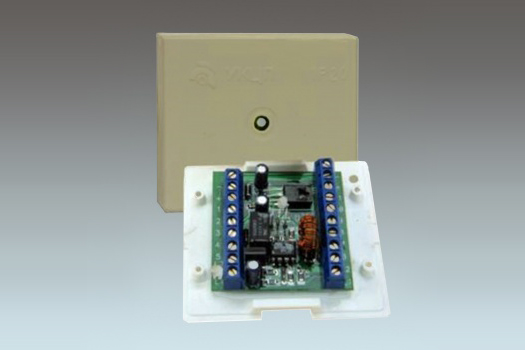UKСiP. Safe operation of automatic fire extinguishing systems
Powder modules, which are the executive devices of many fire extinguishing systems, in most manufacturers have basically the same start-up nodes:
- starting current 0.1 A (100 mA.) is the guaranteed starting current;
- maximum starting current up to 1.0 A;
- safe starting circuit testing current 0.02 A. (20 mA);
- the time for the trigger to trigger the trigger: enough 1.0 millisecond.
Modules with starting currents of 0.4 and 0.7 A. and others are also produced.
In normative documents, the requirements for the parameters for the launch units of modules of automatic fire extinguishing systems are not reflected.
And here there are problems: the safe current of the check of the start circuit is very small and at a current of more than 0.02 A. the start node can trigger. The pulse width for starting the module is very small — 1.0 millisecond is enough.
The start loop is relatively long, and the starting circuits of the modules are connected directly to this loop. During a thunderstorm or under the influence of other negative factors, electromagnetic interference occurs on this loop and, consequently, on the starting circuits of the modules.
From electromagnetic interference sometimes there is an unauthorized launch of one or two modules, with up to 30 modules connected in the loop. This suggests that the current in the trigger loop sometimes reaches 0.1 — 0.15 A.
Fire control devices (hereinafter referred to as FCD) control the start loop, but do not control the starting circuits of the modules, since the modules in automatic fire extinguishing systems are connected in parallel. When the modules are connected in parallel, the total resistance will tend to a small value, therefore, the current will increase, and therefore it is necessary to calculate and set the limiting resistances.
The maximum starting current of the modules is 1.0 A. Even the FCD, to which one module is connected, monitors the start circuit of the module in one direction, at start-up, the starting voltage passes in a different direction, whereby through an additional diode and this direction of the starting circuit is not Controlled.
According to paragraph 12.4.1. B of the code 5.13130.2009 (fire protection systems, fire alarm and automatic fire extinguishing systems, design rules and regulations), the control equipment for gas and powder fire extinguishing systems shall provide automatic monitoring of connecting lines for control of starting devices and start-up circuits devices to the breakage.
Having analyzed many shortcomings of the starting circuits of modules and FCD, our specialists came to the conclusion that for reliable and safe operation of automatic fire extinguishing systems of a modular type, the following should be done:
- the starting circuits of the modules are galvanically isolated from the start-up loop;
- increase the safety check current in the start loop;
- the modules must be started only from the DC voltage output by the FCD;
- increase the voltage pulse time for the signal to start the modules;
- to force the control unit to control the starting circuit of all modules connected to it.
To solve these problems, our company has developed and manufactures a circuit monitoring and start-up device (UKCiP) PTKL.425400.015.TU.
In a properly installed automatic fire extinguishing system, the UKCiP is included in the start loop of the FCD, which monitors the loop. Neither diodes nor resistors in the start-up circuits of modules are installed, even if they are provided in the scheme of switching on the FCD, only the terminal devices are installed at the last UKCiP.
Specifications UKCiP:
- One fire suppression module is connected;
- The supply voltage is constant from 12 to 24 V;
- Signal «START» for UKCiP from FCD: a constant voltage of 8.0 to 26 volts, duration of at least 0.1 seconds. And current from 0.2 A;
- UKCiP gives to the starting circuit of the module 10 to 20 V. DC voltage, depending on the supply voltage UKCiP, duration from 5.0 ms and current up to 1.0 A;
- Carries out control of the starting circuit of the module, supply voltage UKCiP, light indication and signal transmission to the control panel.
What makes the application of UKCiP in automatic fire extinguishing systems:
- The starting circuits of the module are galvanically separated from the start-up loop through the UKCiP scheme, electromagnetic pick-ups on the module starting circuit will not be dangerous;
- Safe test current in the start loop 0.15 A;
- Signal «START» from the FCD to the UKCiP constant voltage from 8.0 to 26 V, duration from 0.1 seconds and current from 0.2 A;
- No need to calculate and install in the starting circuits of the modules limiting resistors and diodes;
- The control of the status of the module start circuit, the supply voltage UKCiP, light indication and signal transmission to the control panel;
- Any module with a starting current of up to 1.0 A can be used;
- The voltage in the start-up and power-up loop of the UKCiP can be from 12 to 24 V, with which they can be independent;
- UKCiP can be used with different FCD.



